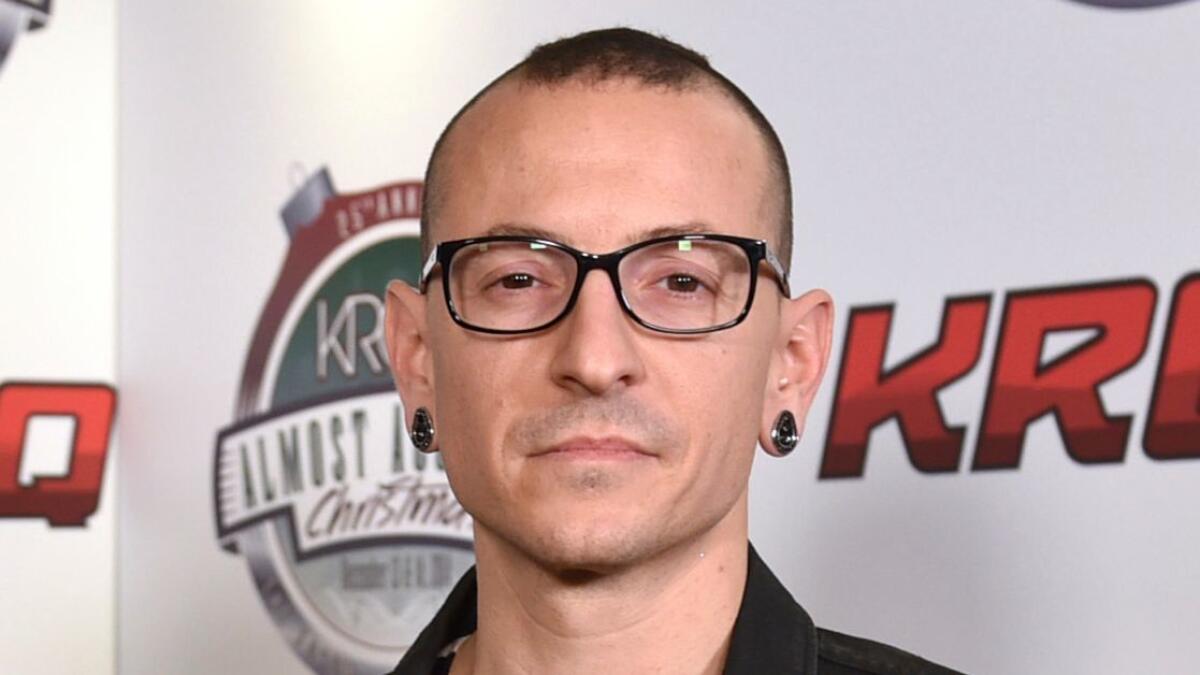Op-Ed: Dear media: When you cover death by suicide, do it thoughtfully

- Share via
Editor’s note: This article was originally published July 21, 2017. We are resurfacing it from the archives because it includes the phone number to the National Suicide Prevention Lifeline and links to reporting resources for journalists.
When a family member died by suicide, my parents chose not to tell me his method. They wanted me to remember him as he lived, for both of our sakes. While I didn’t understand their decision at the time, I now see it as one borne out of deep care. I was especially thankful for my parents’ thoughtfulness after reading the media coverage of Linkin Park singer Chester Bennington’s death by suicide this week.
Because suicide is difficult for many people to talk about, the media play a significant role in how those who do not know someone who has died by suicide perceive it. Unfortunately, much of the coverage of Bennington’s death didn’t take this responsibility seriously enough. It was callous and deeply flawed.
There are numerous resources available for how to report on suicide, including those by ReportingOnSuicide.org, Suicide.org, and the World Health Organization. While each offers comprehensive instruction, they provide three crucial guidelines:
Do not write “committed suicide” — the term is “died by suicide.” Suicide is a public health issue, not a crime, and should be referred to as such. This is a simple but effective way to reframe the issue.
Do not detail methods used. Detailing methods can lead to an increase in suicides, and re-traumatize those who have lost loved ones to suicide.
Always provide suicide prevention information. Whether you’re writing for print or digital, you can afford one line to provide your readers who are considering suicide or know someone considering suicide with a connection to the resources they need.
Not all facts are in the service of truth; we necessarily omit facts from every story we tell.
While E! News, BBC and Rolling Stone reported that Bennington “passed away,” “died,” or “died by suicide,” other media outlets, like Billboard and Complex, reported that he “committed suicide.” TMZ, which broke the story of his death, wrote that he “committed suicide,” named the method in the headline, and detailed his death in the body of their story.
When Soundgarden singer Chris Cornell, a friend of Bennington’s, died by suicide in May, much of the media coverage was similarly insensitive. Snopes wrote that Cornell “committed suicide”; Variety, Salon and SPIN named the method.
Why do the media so often report on death by suicide in ways that are inconsiderate and even dangerous? One is a lack of education, as suicide coverage is critically under-discussed in journalism schools and newsrooms alike. The Associated Press updated its style guide to reflect more thoughtful ways of reporting on death by suicide only in 2015.
I have not made the mistakes listed above, but I have made others. A few weeks ago, I wrote an opinion piece titled: “As depression, anxiety and suicide skyrocket, the GOP wants to gut our mental health coverage.” ReportingOnSuicide.org cautions against reporting on suicides “as an ‘epidemic,’ ‘skyrocketing,’ or other strong terms,” encouraging reporters to use less sensational language. It was an honest mistake, but a mistake that, had I taken the opportunity to better educate myself, I would not have made.
A second real and less-forgivable reason that the media neglect to observe these guidelines is that reporters and social media managers are out to garner clicks. Humans are curious, and we feel entitled to all the information available about the lives and deaths of public figures. But readers and reporters alike would benefit from enhanced discretion. No number of page views is worth pushing someone considering suicide to contemplate a particular method.
Reporters are too often tempted to impose simple narratives on complicated lives. In the wake of Bennington and Cornell’s recent deaths by suicide, the media was quick to connect their deaths to an event in their lives. Suicide prevention experts caution that suicide is never the result of a single precipitating factor, but instead a complex web of factors. Reporters should defer to the experience and research of those who spend their lives in this field.
Some reporters will argue that providing the details of death by suicide is in the public interest, and that our jobs are to tell the truth, not to protect our readers from it. But not all facts are in the service of truth; we necessarily omit facts from every story we tell. The critical facts in this case are that a beloved man died yesterday. The truth is we owe him — and all who die by suicide — a more thoughtful story.
If you or a loved one is considering suicide, please call The National Suicide Prevention Lifeline 1-800-273-TALK (8255).::
Melissa Batchelor Warnke is a contributing writer to Opinion. Follow her on Twitter @velvetmelvis.
More to Read
A cure for the common opinion
Get thought-provoking perspectives with our weekly newsletter.
You may occasionally receive promotional content from the Los Angeles Times.











